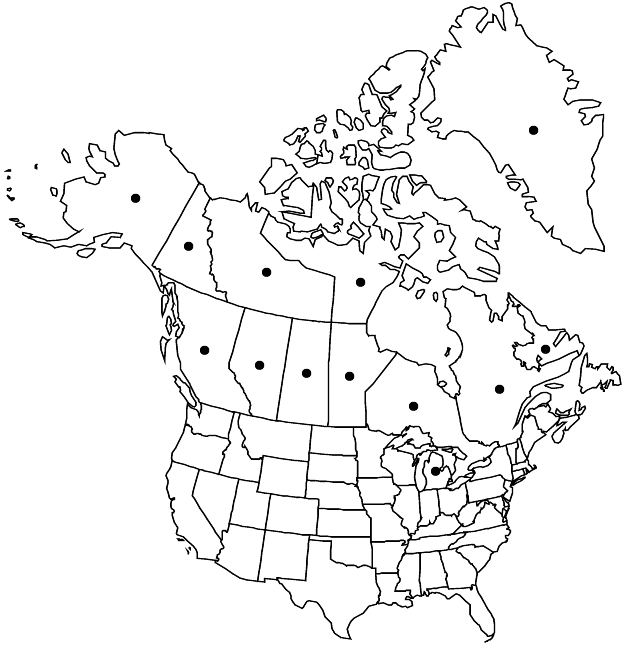Difference between revisions of "Saxifraga tricuspidata"
Skr. Kiøbenhavnske Selsk. Laerd. Elsk. 10: 446. 1770 (as 3cuspidata) ,.
imported>Volume Importer |
imported>Volume Importer |
||
| Line 53: | Line 53: | ||
|publication year= | |publication year= | ||
|special status=Illustrated;Endemic | |special status=Illustrated;Endemic | ||
| − | |source xml=https:// | + | |source xml=https://bitbucket.org/aafc-mbb/fna-data-curation/src/2e0870ddd59836b60bcf96646a41e87ea5a5943a/coarse_grained_fna_xml/V8/V8_284.xml |
|genus=Saxifraga | |genus=Saxifraga | ||
|species=Saxifraga tricuspidata | |species=Saxifraga tricuspidata | ||
Latest revision as of 22:42, 5 November 2020
Plants loosely mat-forming, (stems trailing), not stoloniferous, with elongate caudex or rhizomatous. Leaves cauline, (marcescent, crowded proximally); petiole absent; blade (often reddish), linear to cuneate, 1–3-lobed or -toothed apically (distal cauline unlobed), rarely all unlobed, (lobes long spinose-mucronate), 5–20 mm, leathery, margins entire, softly glandular-ciliate, (nonsecreting hydathodes present adaxially), apex acute, long spinose-mucronate, surfaces glabrous. Inflorescences 3–10-flowered cymes, 4–10(–24) cm, white to sparsely pink- to purple-tipped stipitate-glandular; bracts sessile. Flowers: sepals erect to ascending, (sometimes purplish), triangular-ovate, margins ± glandular-ciliate, surfaces white to purple-tipped stipitate-glandular; petals white to cream, proximally to distally yellow-, orange-, and red-spotted, elliptic to ovate, 4–7 mm, much longer than sepals; ovary superior. 2n = 26.
Phenology: Flowering late spring–summer.
Habitat: Open sandy, gravelly, or rocky sites, forest openings, grassy slopes, rocky ridges, stony tundra
Elevation: 0-3000 m
Distribution

Greenland, Alta., B.C., Man., Nfld. and Labr. (Labr.), N.W.T., Nunavut, Ont., Que., Sask., Yukon, Alaska, Mich.
Discussion
The rare, entire-leaved form of Saxifraga tricuspidata can be confused with S. bronchialis; it has glandular-ciliate margins instead of stiffly hooked-ciliate ones.
Selected References
None.
